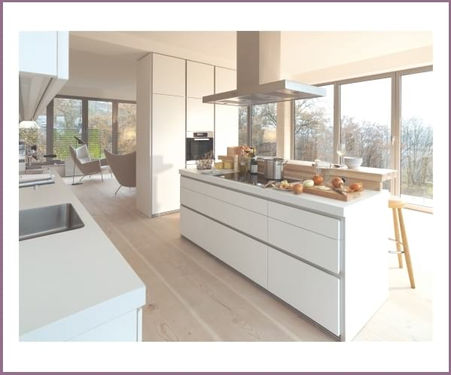YOUR KITCHEN.
FRESH.
Expel cooking fumes & grease for a healthy home.

BENEFITS.....
Newmatic Advantage
FREE INSTALLATION
Managed by our skilled technicians
FREE DELIVERY
Within Kampala
TECHNICAL SUPPORT
Parts & service within 48 hours
5 YEARS WARRANTY
On motor
POWER EXTRACTION
Twin metal propellers 760m3/hr airflow
LED LAMPS
Energy saving & ultra durable
How to choose a kitchen hood....
TYPE OF MOUNT
The way the kitchen hood is mounted is a good place to start. Wall-mounted hoods are the most common, applicable to more than 50% of kitchens. Ceiling mounted or island hoods serve large, island styled kitchen designs. Undermount or integrated hoods have lower airflows and are usually for smaller kitchens to maximize kitchen cabinet space.
SIZE (WIDTH)
The size of the chimney hood refers to the width, this is determined by the width of the stove that the hood serves. The most common sizes of stoves are 90 & 60cm. Less common are 30cm or anything between 70-80cm. The width of the hood should be at least the width of the stove to ensure the capture of cooking fumes, so hoods of 90 & 60cm widths are the most common. Hoods of widths 70, 80 & 100cm are available but not common.
DUCTED OR RE-CIRCULATING
Hoods are originally designed to operate in the ducted model where exhaust & cooking fumes are expelled followed by reciprocal intake of fresh air into the kitchen. However, in certain situation where it is not possible to do so, some hoods may be operated in re-circulating mode by adding charcoal filters. In the re-circulating mode, the hood works more like an air cleaner where aluminium filters condense residual grease & steam, and charcoal filters absorb cooking odour.
BLOWERS
The blower is the heart of the hood, like the engine of a car. It consists of a motor, propeller/s enclosed in a housing.
The housing & propellers may be made of plastic (fire resistant PP) or steel, the latter offering high rigidity, high pressure & no risk of deformation from heat. Plastic blowers & propellers are easy to manufacture & are less noisy.
The types of motors used in a blower may be
-
DC - expensive, most quiet, high energy efficiency, offers stepless control
-
AC - most common, high torque, standard efficiency, extreme durability
-
Shaded pole – low cost, poor energy efficiency that gets worse with age, poor airflow
AIRFLOW
The airflow refers to the extraction power of the hood and denoted in m3/hr. The airflow of chimney hoods may range from 150~1200m3/hr.
As a general guide, choose airflow for your kitchen as follow:-
-
Small kitchens up to 10 sqm : 150~350 m3/hr
-
Medium kitchens 11~20 sqm : 350~650 m3/hr
-
Large kitchens bigget than 25 sqm : 750~1200m3/hr
In recirculating mode, airflow numbers of a chimney hood is mostly irrelevant.
ILLUMINATION
-
Stainless steel – Usually of the 430 grade & 0.6-0.9mm gauge, it is a very durable material. The hairline finishing is attractive but delicate (not scratch proof)
-
Painted steel – Used in low cost hood, powder coated steel is not durable at all under the conditions of a working kitchen.
-
Tempered glass – The best material used in hood canopies. An endlessly durable material that looks new even after years of use and very easy to clean.
-
Non-tempered glass – A very dangerous practice in the industry to reduce cost and make a cheap product look expensive. Non-tempered glass breaks easily, large shards falling from height may cause serious injury
CONTROLS
The hood may be controlled by mechanical or electronic type switches.
-
Touch – best for high end products. Hermetically sealed from steam & fumes of the kitchen environment making it very durable. Sleek looks & feature functions like remote control, timer, dimming.
-
Electronic– works like the touch control except for the protruding buttons. Cooking fumes & steam may penetrate to reduce its useful life. The buttons make cleaning less convenient.
-
Mechanical push button – A simple, easy to operate switch used in mid to low range hoods. Not sophisticated but very durable.
-
Mechanical slider switch – Simple switch in low end hoods. Difficult to operate with greasy finger, not durable at all due to design.
CHASSIS MATERIAL
-
Stainless steel – Usually 430 grade & 0.6-0.9mm gauge, it is a very durable material. Hairline finishing is attractive but delicate (not scratch proof)
-
Painted steel – Used in low cost hoods powder coated steel is not durable at all under the conditions of a working kitchen.
-
Tempered glass – Best material for hood canopies. Endlessly durable and looks new even after years of use, very easy to clean.
-
Non-tempered glass – A dark practice in the industry to reduce cost & make a cheap product look expensive. Non-tempered glass breaks easily, large shards falling from height may cause serious injury
PITFALLS & TELL TALE SIGNS
-
Plastic latch on aluminium filters : If you remove a pot from the gas stove without switching off the flame, this part will melt in a minute
-
Plastic lamp cover over incandescent bulb: The lamp cover will melt should you forget switch off the lamp.
-
Hood is very light : cutting corners with thin material & subsituted parts with plastic
-
Grease or charcoal filters in fibre sheet: A fire hazard when saturated with grease


















